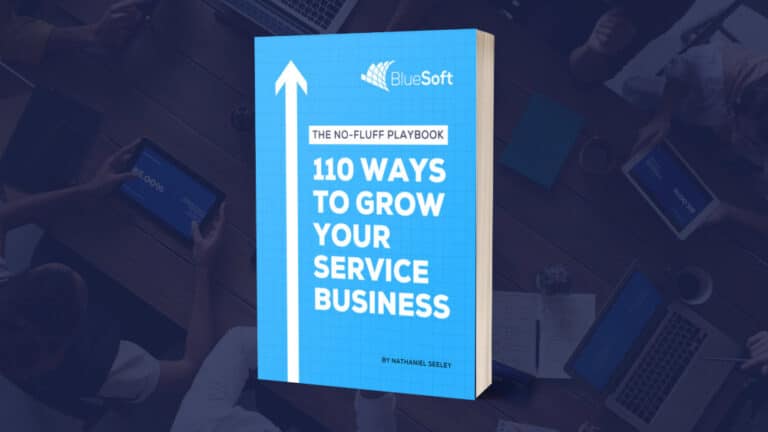You can scroll to the bottom of the page for the video version of this article or view it on YouTube here.
Pay-Per-Click (PPC) advertising can be a powerful way to attract potential clients to your contracting business. However, launching a successful PPC campaign involves more than just setting up ads. This article will guide you through the steps you should take to prepare your business for PPC marketing, maximizing your chances of turning leads into profitable clients.
Answering the Phone: First Impressions Matter
A crucial consideration for PPC marketing is who will be answering the phone. Consider these questions:
- How many rings before someone answers the call?
- What is the booking rate for appointments?
- Is there a script in place for incoming calls?
Ensure that the person answering the phone is well-trained, personable, and efficient.
Streamlining Your Booking Process
A streamlined booking process can be the determining factor between a one-time client and a loyal customer. Implementing a comprehensive and integrated booking system can help manage appointments more effectively. There are several aspects to consider:
- Online Booking: An online booking system that syncs with your contracting company’s calendar can ensure appointments are managed efficiently. This system should be updated in real time and prevent overlapping bookings from different platforms, be it online, via phone call, text, or chat.
- Appointment Reminders: Implementing an automated system to send appointment reminders can significantly reduce no-shows and last-minute cancellations. This can be done through:
- Text Message Reminders: These are particularly effective as they can provide real-time updates and are often checked more frequently by clients.
- Email Reminders: A more detailed medium, email reminders can include additional information such as the name of the staff member they’ll be meeting, what to expect from the appointment, and how to prepare.
- Staff Notifications: Keep your team in the loop with automated notifications reminding them to follow up with clients as their appointment draws near. This reminder could include details like who will be attending the appointment and any special preparations that might be needed.
- Intra-Company Synchronization: The booking system should be designed to provide a unified view of each staff member’s schedule. This feature prevents overbooking and ensures that all appointments are adequately spaced and attended to.
- Booking Confirmations: Upon scheduling an appointment, the system should automatically send a confirmation message or email to the client, reinforcing the professional approach of your company.
- Rescheduling & Cancellations: Make provisions for easy rescheduling or cancellations. A difficult process can lead to unsatisfied clients and negative reviews.
Remember, a booking process isn’t just about slotting in appointments—it should aim to enhance customer satisfaction and retention through efficient management and communication.

Customer Relationship Management (CRM)
Effective Customer Relationship Management (CRM) is essential for both nurturing leads and retaining customers. An optimized CRM system can track interactions with potential and existing clients, helping you to personalize your service and understand your ROI better. Consider these critical aspects:
- Real-Time Updates: Ensure your CRM system updates frequently or even in real time. This allows you to have an up-to-date view of customer interactions, transactions, and status.
- Campaign Tagging: Your CRM should be set up to tag customer profiles with the campaign from which they came, labels that could be as broad as “Google Ads” or as specific as individual campaigns. This feature enables you to track the customer throughout your entire process, including payments received and total customer spend, allowing you to calculate metrics such as ROI, ROAS, and LTV based on lead source.
- Sync with Email Marketing: A CRM system that synchronizes with your email marketing software can prevent redundant data entry and ensure all your platforms have the same, up-to-date information.
- Integration with Bookkeeping: Syncing your CRM with your bookkeeping software can help track all payments and total customer spend. This connection not only allows for better financial tracking but also reduces the risk of cross-platform data entry errors.
- Reporting and Dashboards: Establish reporting or marketing dashboards that are updated with real-time data from your CRM, allowing you to get a quick snapshot of your business performance at any given moment.
- Deal Stages: Your CRM should allow you to see where deals stand easily. You should be able to segment leads or deals based on their stages, such as new leads, submitted quotes, deals in closing, and recently closed deals. This will enable you to monitor these deal stages actively and push prospects toward your desired outcome.
- Automation: Keeping potentials and customers in their most accurate deal stages allows for effective automation. For instance, a hot lead that just came in could automatically receive a welcome email outlining your services, unique selling proposition, and other key information.
- Customer Segmentation: Effective CRM systems enable the segmentation of your customer base. You can categorize your customers based on various parameters such as engagement levels, purchase history, lead source, etc., which in turn can help in designing targeted marketing campaigns.
By maintaining an optimized and integrated CRM system, you can streamline your operations, improve customer engagement, and gain valuable insights into your business performance and growth strategies.
Email Marketing
Investing in email marketing is a strategic move that can nurture leads and keep your contracting business at the forefront of customers’ minds. There are several tactics and strategies you can employ to fully leverage your PPC leads through email marketing:
- Introduction Emails: Once a potential client engages with your business, send a detailed email that elaborates on your services, value propositions, and unique selling points. Such outreach keeps you at the forefront of their minds, especially if they’re shopping around.
- Special Offers: Sending announcements about special offers, discounts, or exclusive deals can create a sense of urgency and tip potential clients toward choosing your service.
- Staff Introductions: Including an introduction to the team member who will be their primary point of contact can personalize the experience and put new clients at ease.
- Appointment Reminders: Send out reminders for upcoming appointments or seasonal maintenance and tune-up appointments. This courtesy not only demonstrates your commitment to customer service but also ensures appointments aren’t missed.
- Post-Service Surveys: Follow up with a survey to gauge customer satisfaction. This step can help preemptively address potential negative reviews and reinforce positive experiences.
- Request Reviews: Don’t hesitate to ask satisfied customers for reviews. Positive reviews will bolster your online reputation and attract more customers.
- Lost Customer Surveys: If a potential customer decides not to use your services, send a polite survey asking for their reasons. This feedback can provide valuable insights for improving your services and closing more deals in the future.
- Segmentation: Segment your email list based on various parameters like the products or services customers have purchased, their engagement level, etc. This allows for more personalized communication and can enhance the customer experience.
- Referral Programs: Use your email list to promote your referral program. Offering rewards to customers who refer others can help expand your customer base.
- Educational Content: Regularly sending educational content related to your services can also add value for your clients. You can offer tips for maintenance, industry news, or any other relevant information that your clients might find useful.
Email marketing, when done right, can significantly improve your client engagement, increase conversions, and ultimately contribute to your business’s growth.
Landing Page Optimization
Running successful PPC campaigns for contractors involves directing visitors to a dedicated, relevant landing page optimized for conversions. This involves:
- Relevance: Your landing page content should match the contents of your ad. If your ad speaks about roof repair, your landing page should discuss the same topic, making a logical connection.
- Page Speed: The page should load quickly to avoid deterring potential customers. Slow-loading pages can lead to higher bounce rates and lower conversion rates.
- SEO Best Practices: Use SEO best practices in your landing page design and content. This dual-purpose strategy can rank your page in SERPs and attract organic traffic alongside your paid traffic.
- Minimal Distractions: A clean and straightforward landing page prevents distractions from your primary call to action. Limit the number of links or navigational elements.
- Multiple CTAs: Ensure the page has multiple Calls to Action (CTAs). A visible and clickable phone number or “contact” button should appear before users scroll down.
- Authentic Imagery: Avoid using cliched stock photos. Instead, opt for high-quality, authentic images that convey your brand’s personality and resonate with your target audience.
- Value Propositions and Credibility: Prominently display your unique selling propositions, credentials, licenses, certifications, and customer testimonials. Building credibility is crucial to gain visitor trust.
- Mobile Responsiveness: The landing page should function well and look good across all device types – desktop, tablet, and mobile.
- Concise and Engaging Content: Keep content concise, engaging, and to the point. Short paragraphs or bullet points convey your message quickly and clearly.
- Use of Videos: If you have high-quality videos, incorporate them into your landing page. Videos can effectively communicate your story and explain your services.
- High-Converting Layouts: Use a layout known to be high-converting. The ‘F’ or ‘Z’ pattern layouts align with natural eye movement and can be very effective.
- Clear and Urgent Messaging: Convey the value of your service and why potential customers should engage with you now to create a sense of urgency and prompt action.
- Overcoming Objections: Address potential objections by clearly stating any warranties or guarantees that you offer. A FAQ section addressing common concerns can also be beneficial. By addressing these potential objections upfront, you can increase the likelihood of visitors becoming leads or customers.
Implementing these best practices can significantly improve your conversion rates. The goal is not just to inform but to convert visitors into leads or customers.

Call Quality and Lead Source Tracking
Ensuring the quality of phone calls and accurately tracking the source of your leads is integral to optimizing your PPC campaign. One effective way to accomplish this is by utilizing call-tracking software such as CallRail. This software offers a variety of features that can enhance your understanding of your leads and conversions:
- Call Recording: CallRail allows you to record calls, enabling you to gauge the interest of the caller and understand how your team is handling phone calls. Reviewing these recordings provides valuable insights into areas of improvement to enhance customer interaction.
- Call Qualification: Mark calls as qualified or not qualified. This feature helps you sort and prioritize leads, enabling more focused and efficient follow-ups.
- Call Tagging: CallRail allows you to tag calls with important information such as ‘current customer,’ ‘opportunity,’ ‘outside of service area,’ ‘solicitation,’ ‘missed call,’ etc. These tags can help you create meaningful, targeted reports to analyze the effectiveness of your PPC campaigns.
- Robust Reporting: With the input from each call, you can utilize CallRail’s robust reporting features to gain a comprehensive understanding of your campaigns. This insight can help optimize your PPC strategy and budget allocation.
- Lead Form Data Capture: In addition to phone calls, most call tracking systems, including CallRail, capture lead form data. This allows you to mark forms as qualified or not qualified, apply tags, and gain a larger snapshot of your data.
By using a call tracking system, you can ensure that no lead falls through the cracks, your team is consistently delivering quality service, and your PPC strategy is continually being optimized.
Budgeting for PPC
A vital part of preparing your contractor business for a PPC campaign is defining your budget. This will largely depend on your industry’s cost-per-click (CPC), your overall marketing budget, the lifetime value (LTV) of your customers, the profitability of your services, and your capacity to handle new projects. Here’s what you should understand:
- Industry CPCs: The average cost-per-click varies widely depending on your industry and the competition for your target keywords. Having an understanding of these costs can help you budget appropriately for your PPC campaign.
- Customer Lifetime Value (LTV): This is the total net profit that you make from any given customer. Knowing this value can help you determine how much you are willing to spend to acquire a new customer.
- Understanding PPC Jargon: It’s essential to understand terms like CPC, CPA (Cost Per Acquisition), CPM (Cost Per Thousand Impressions), Quality Score, and more. These terms will help you understand how your budget is being used and how to optimize your campaign.
- Cost Per Acquisition (CPA): This is the average amount it costs you to acquire a customer. By understanding this metric, you can better plan your budget to acquire new customers effectively.
- Booking Rate: Your booking rate is the percentage of leads that convert into booked jobs. Knowing this rate helps forecast revenue from your PPC spend and make more informed budgeting decisions.
- Lead Follow-up: Understanding the rate at which you can’t get a hold of leads can influence your PPC budget. If many leads are slipping through, you may need to allocate resources toward improving your follow-up process.
- Understanding Your Sales Funnel: Knowing the steps your customers take from becoming a lead to making a purchase can help you allocate your PPC budget efficiently across different campaign stages.
- Non-Qualified Rate: This is the rate at which leads don’t qualify for your service. Understanding this rate can help you tweak your PPC targeting to attract more qualified leads, enhancing your budget’s effectiveness.
- Setting CPA Goals: Having a target CPA can help you manage your budget and measure the success of your PPC campaign.
- Setting Lead Volume Goals: Knowing how many leads you want to generate will help you allocate your budget to meet this goal.
- Understanding Your Capacity: How many new clients or projects can you handle? This will affect your lead volume goals and therefore your PPC budget.
- Understanding Your Profitability: Knowing the profitability of each service can guide your budget allocation. You may want to invest more in promoting high-profit services.
- PPC Management Fees: Remember to factor in the cost of managing your PPC campaign, whether you’re doing it in-house or outsourcing it. These costs should be included in your CPA.
- Potential Growth and Improvements: Remember, it can take time for PPC campaigns to mature, improve, and optimize. Be patient and continuously test different strategies to improve your ROI.
By understanding these factors, you can create a more accurate and effective budget for your PPC campaign, which can drive your contractor business’s growth.
Assessing PPC Performance
Understanding and assessing your PPC campaign’s performance is vital. Metrics such as click-through rates, cost per conversion, and overall ROI should be regularly monitored. As management consultant Peter Drucker said, “What gets measured gets managed.” To do so effectively, consider the following:
- Performance Reporting Software: Employ additional software to report and monitor your performance. This tool can aid in digesting all the data from your PPC campaign and help identify trends, issues, and opportunities.
- Utilize a Call Tracking System: A call tracking system like CallRail or a similar alternative can be invaluable. Keeping it updated with tags for ‘qualified’, ‘not qualified’, and other relevant categories will help you understand where your leads stand. The more precise you are here, the better your reports will be.
- End-to-End Lead Tracking: Keep a record of each lead’s journey, from their initial contact to a sale or lost sale, and how much they spend. This tracking is critical to understanding your profitability and optimizing your campaign.
- Custom Marketing Dashboard: A custom marketing dashboard, like DashThis or a similar platform, can help you save time by quickly reviewing critical numbers and staying on top of them.
- Call Recordings: Having call recording in place enables you to dive deep into your calls and evaluate if your team is missing opportunities. These recordings can also provide insights into customer behavior and preferences.
- Strategic Report Planning: Well-planned reporting will give you actionable data. Decide on what metrics and trends are most critical to your business and ensure they are included in your reports.
- Regular Meetings with your PPC Team: Keep an open line of communication with your PPC team. Regular meetings or video updates can help you understand the progress of your campaign and determine the necessary next actions.
Remember, the quality of your input greatly affects the quality of your output — garbage in, garbage out. If you’re not taking the time to properly manage all your leads, it’s going to be difficult to trust the data. Rigorous and regular performance assessment is key to continuously improving your PPC campaigns and, ultimately, your contractor business’s profitability.

Determining Your Customer LTV
Understanding your customer’s Lifetime Value (LTV) can play a critical role in informing your PPC spending. It’s vital to know how much you can afford to spend to acquire a customer without sacrificing profitability. In a nutshell, LTV is the total amount of money a customer is expected to spend in your business during their lifetime.
Here are some critical factors when determining LTV:
- Customer Tenure: How long do customers typically stay with you? The longer a customer stays with you, the higher their LTV.
- Service Engagement: How often do your customers engage your services? Regular engagement signifies a higher LTV.
- Sales per Customer: How many separate sales do you typically make per customer? The more sales you can make to a single customer, the higher their LTV.
- Referrals: Do your customers typically send you referrals? A customer that refers others to your business effectively increases their LTV, as they bring in additional revenue without requiring further acquisition costs.
- Revenue per Customer: How much revenue do you make on average per customer? High-revenue customers have a higher LTV.
- Profit per Customer: How much profit do you make on average per customer? Remember to account for the costs associated with serving each customer to accurately calculate their LTV.
- LTV Improvement: Are there ways that you could improve your LTV? For example, by improving customer service or introducing loyalty programs, you can increase customer retention and thus LTV.
- Churn or Cancellation Rate: What is your churn rate or project cancellation rate? High churn or cancellation rates may decrease the LTV.
By understanding these aspects, you’ll gain a better understanding of your customers’ value and be able to adjust your PPC spending more effectively. Remember, every business is unique, so it’s crucial to customize these considerations to fit your specific situation.
Communicating with Your PPC Team
Effective communication with your PPC team is key to the success of your campaigns. It ensures you’re all on the same page regarding objectives, strategies, and progress. Here are some critical aspects of this communication:
- Consistent Communication: Establish a regular schedule for communicating with your PPC team to ensure things stay on track and goals are being met. This could be weekly or monthly meetings or progress report emails. Consistency will keep everyone accountable and aligned.
- Adapting to Your Communication Style: Every individual and organization has a preferred communication style. Whether you like quick phone calls, screen share meetings, video updates, or PDF reports, your PPC team should be able to adapt to your needs and ensure you’re always kept in the loop.
- Providing Relevant Updates: Unless your PPC team is listening to the calls or directly interacting with leads, they may not have all the information they need. If you’re getting a lot of calls from outside your service area or irrelevant clicks from Google Ads, you should inform your team. They can then refine the Geo-targeting or keyword strategy, preventing wasted money and effort.
- Reporting and Explanation: Your team should be proactive in explaining the metrics and progress of your PPC campaigns. Screen recording walk-throughs or detailed written reports can help you understand what’s happening and what actions will be taken next.
- Openness to Input: Your team should be open to your input. They can offer expert advice, but the final decision often rests with you, the business owner.
- Collaboration: You, as the business owner, also need to invest time in helping your PPC team, especially if there’s any confusion along the way. Effective PPC management is a collaborative process, with both parties sharing insights, knowledge, and strategies.
- Education: A good PPC team will educate you along the way. PPC can be a complex field, and understanding its basics will help you make more informed decisions about your campaigns. This education can also make your collaborations more productive, as you’ll better understand the strategies your team suggests.

Managing Lead Capacity
Understanding your lead capacity is essential in ensuring that your service quality isn’t compromised while effectively managing your PPC spending. Here are some vital aspects to consider:
- Balancing Quality and Quantity: While reaching or exceeding your lead capacity might seem like a good problem to have, it can cause issues if not managed properly. Overwhelmed with too many leads, your team might fail to provide each lead with the attention they deserve, affecting your service quality and online reputation.
- Prompt Response: You invest significant resources into your PPC campaigns to generate leads, so it’s critical to respond to each lead promptly. Delayed responses could lead to missed opportunities and wasted investment.
- Sufficient Resources: Understanding your capacity for leads and appointments per day is essential to ensure you have the necessary resources to service them all effectively. If your team is stretched too thin, it could result in poor service and lost credibility.
- Quality Staff: While the influx of leads might tempt you to hire new team members quickly, prioritizing quality over speed is essential. Rapid hiring can often lead to compromises in the quality of staff, which can subsequently affect the quality of service. A steady, well-planned approach to team growth will ensure a sustainable increase in capacity.
- Adaptable PPC Budget: If you’re regularly exceeding your lead capacity, you have the option to dial back your PPC budget. Slowing down can give you a chance to grow your capacity sustainably without sacrificing service quality.
- Lead Distribution: Consider your ability to distribute leads efficiently across your team. If some team members are overwhelmed while others have spare capacity, optimizing lead distribution could allow you to handle more leads effectively.
- Lead Qualification: Not all leads are worth the same amount of time and effort. Establishing a system for qualifying leads can help you prioritize the most valuable prospects, ensuring your resources are used effectively.
Handling Form Submissions
Form submissions are hot leads that should be prioritized. Whether they’re requesting a quote, booking a consultation, or seeking more information, these leads have shown a high level of interest in your contracting services. Therefore, you should have a system in place to ensure these leads are followed up with as quickly as possible. Consider these points:
- Who will be in charge of following up on form submissions?
- How quickly can you realistically respond to these leads?
- Do you have an automated system to acknowledge receipt of their submission?
Remember, prompt and professional responses can significantly boost your chances of converting these leads into clients, maximizing the return on your PPC investment.
Putting PPC to Work for Your Contracting Business
Implementing the strategies outlined in this comprehensive guide will significantly improve your chances of running successful and profitable PPC campaigns for contractors. From effective communication with your PPC team to understanding customer LTV and managing lead capacity, every detail is critical in creating a robust PPC framework that generates valuable leads.
While this guide is exhaustive, don’t feel overwhelmed. Finding the right PPC company can be a game-changer. The right partner will help you navigate the intricacies of PPC marketing and ensure all the points mentioned here are appropriately addressed. Your success should be their success – they should be as committed to your growth as you are, not just interested in their paycheck.
Remember, a PPC campaign is not a set-and-forget endeavor. It requires continuous effort, learning, adaptation, and fine-tuning. It might seem daunting initially, but the benefits of increased leads, customer engagement, and profitability will make every bit of effort worth it. Let’s buckle up and launch your profitable PPC campaign today!




